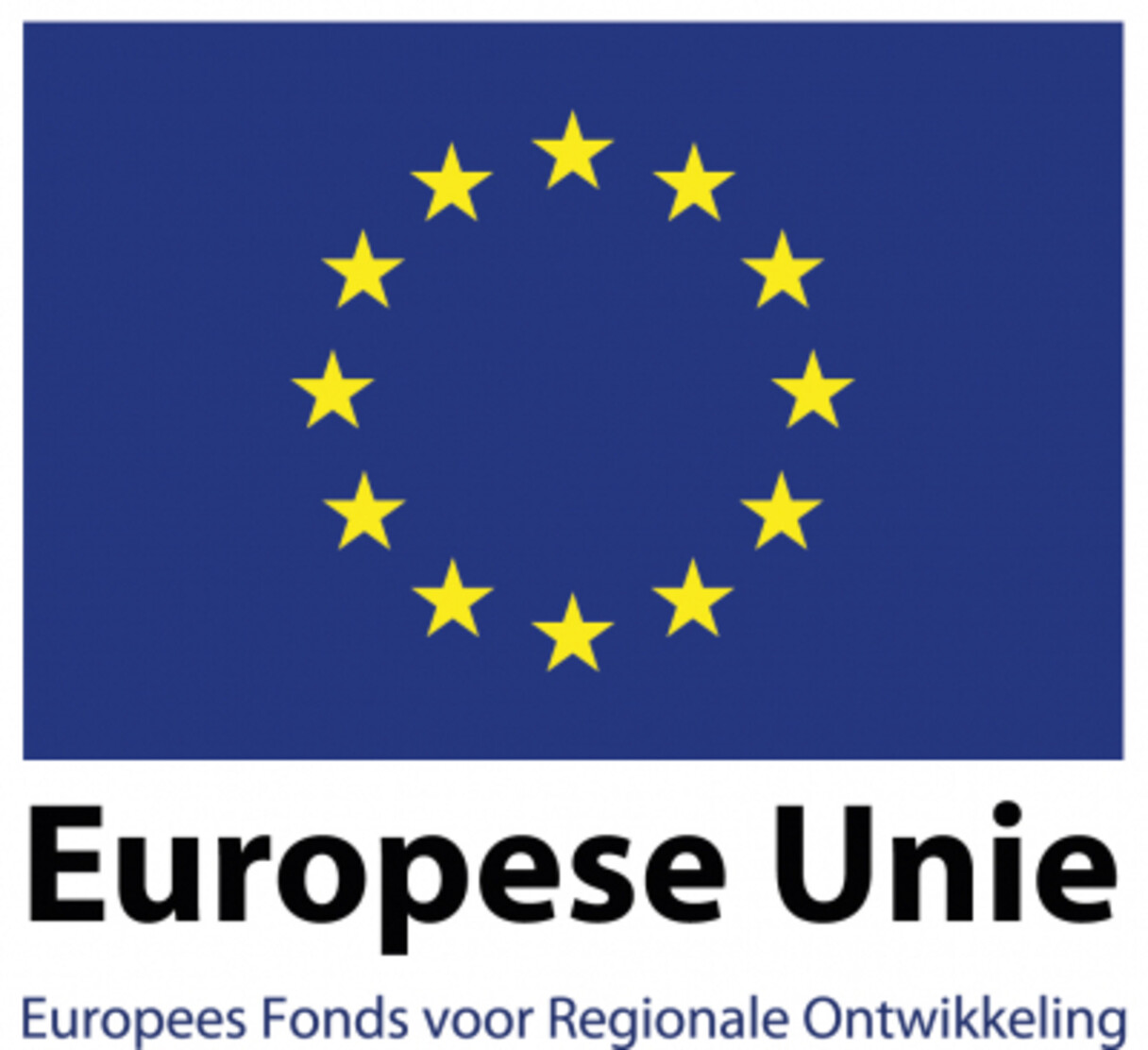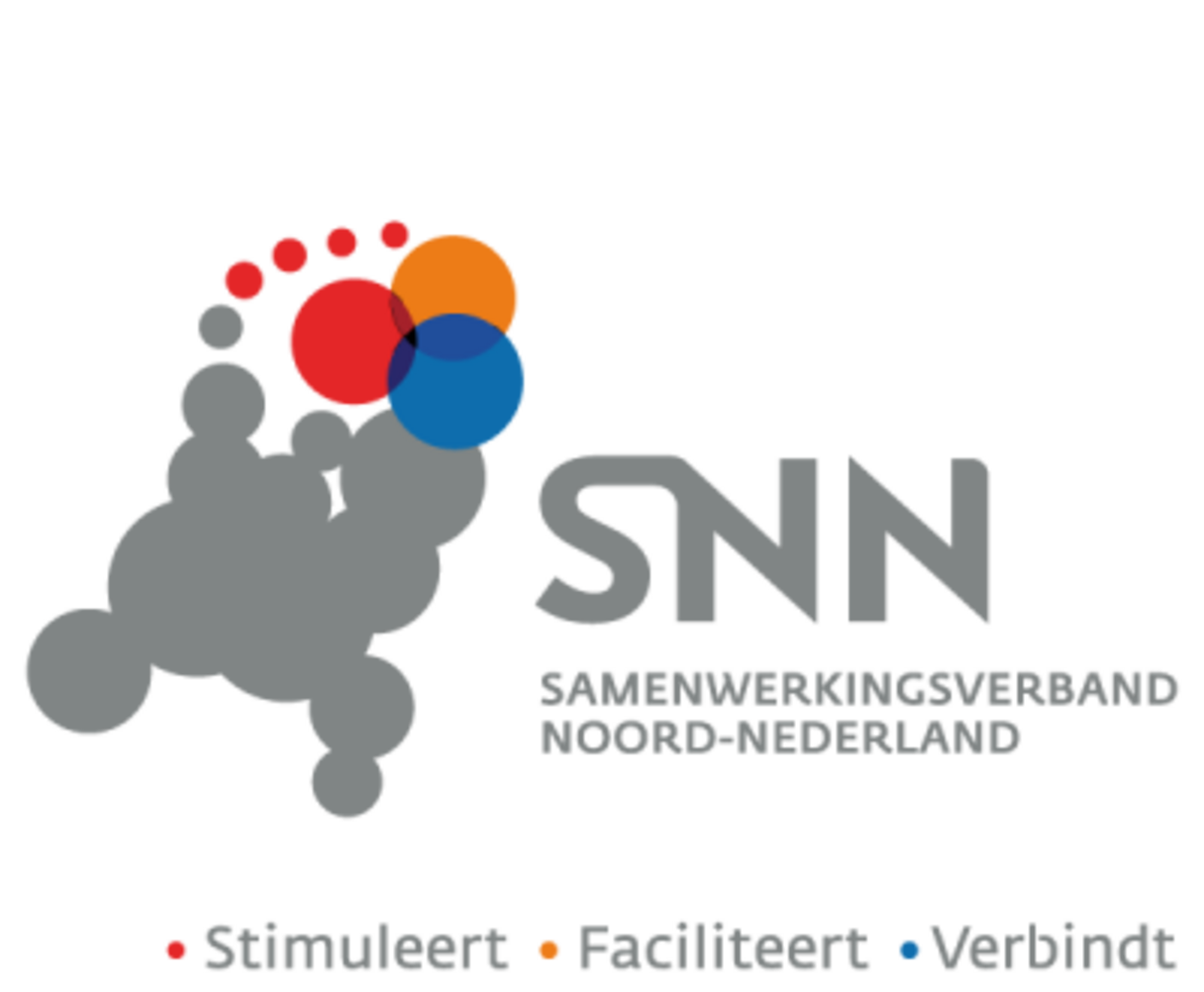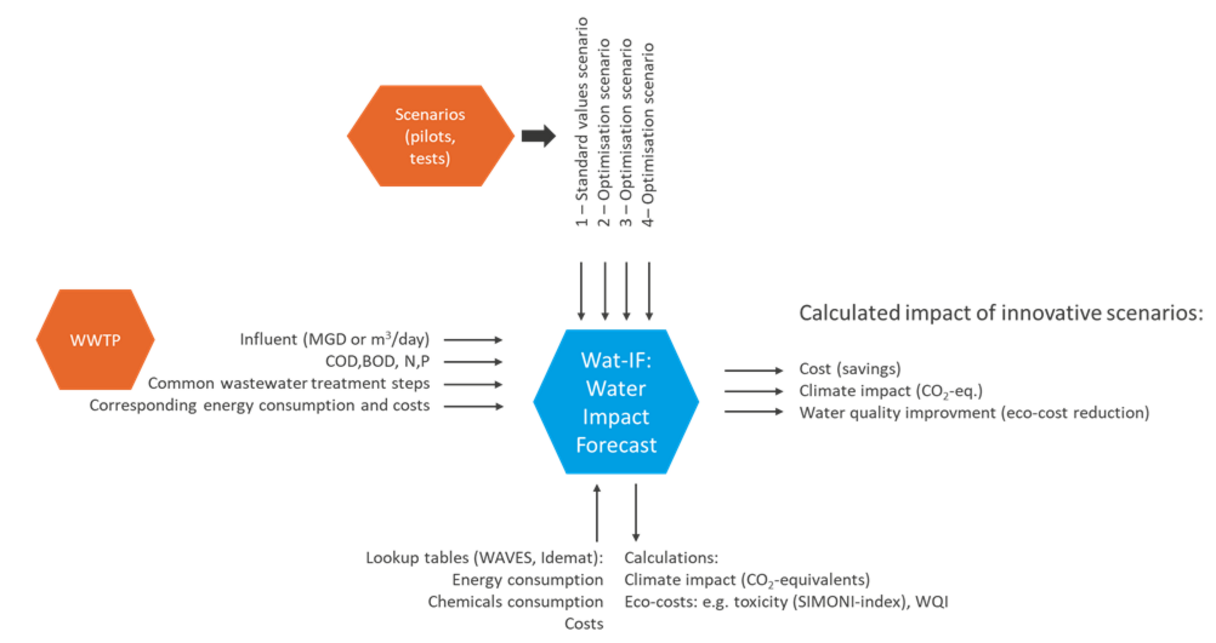Water Impact Forecast – Wat-IF
The Dutch water boards are fully engaged in the energy transition and making efforts to meet climate objectives as agreed with the Dutch national government and derived from the International Paris Climate Agreement; there is a strong commitment to deploying renewable energy sources.
According to the annual Climate Progress report ("Klimaatmonitor") of the Dutch Water Boards, major progress has been made in reducing the climate footprint of wastewater treatment and water systems management, especially by focusing on the purchase of renewabel energy. However, between 2018 and 2019, the total energy consumption of Dutch Water Boards increased by 0.7% for wastewater treatment and 10.7% for water systems management. In addition, the report shows that the emissions of nitrous oxide from WWTPs have been greatly underestimated. Nitrous oxide (N2O; laughing gas) is a very potent greenhouse gas: its Global Warming Potential (GWP) is 265 times that of carbon dioxide. As a result of various adjustments to the calculation method, the climate footprint of the water boards is expected to rise again from 2021.


The switch to renewable energy has so far been effective in reducing the carbon footprint of the Water Boards, but ultimately a reduction in actual energy consumption is the most sustainable. In addition, stricter quality requirements are increasingly being set for the effluent from WWTPs, in particular in relation to pharmaceuticals and other micropollutants, to improve the quality of the receiving water and to increase the possibilities for reuse. This requires further treatment than what is now commonly available, and additional treatment steps often consume (much) extra energy. As a result, it is becoming increasingly difficult to further reduce the carbon footprint of wastewater treatement plants (WWTPs).
The Water Impact Forecast (Wat-IF) decision-support tool is being developed to accelerate the acceptance and application of new monitoring concepts and innovative technologies to help reduce the carbon footprint WWTPs. This tool offers the possibility to quickly calculate different scenarios from pilot demonstrations on the basis of a utility’s own influent and treatment characteristics. Wat-IF actually does three things:
- The model converts the results of published studies and pilot projects in the Netherlands and abroad to a utility’s own WWTP so that the expected effects can be calculated accurately and quickly. Thus, by taking into account the utility’s own characteristics, Wat-IF provides more certainty about the scalability of effects observed in pilot projects.
- The results are presented in a well-organised manner and contain all the necessary information to feed the three aforementioned discussion levels (technical, management and political-administrative) with regard to technical feasibility, logistic feasibility and the consequences of political choices.
- Different scenarios are made comparable on the basis of costs and benefits, which are expressed as costs / cost savings, energy consumption / tons of CO2 reduction, and eco-costs (ecotoxicity) / eco-benefits (improved water quality).
- Support the northern Water Boards in reducing their WWTPs' carbon footprint, in particular by reducing energy and chemical consumption and minimising nitrous oxide emissions during wastewater treatment.
- Develop a digital decision-support tool which translates the results of (national and international) studies and pilot projects into possible optimisation scenarios for a specific wastewater treatment configuration, so that the expected costs and benefits in terms of money, carbon footprint and water quality can be calculated rapidly, based on the specific characteristics of the treatment process (e.g. treated volume, general pollution level, etc.).
- Develop a user-friendly interface and presentation module for the Wat-IF tool which guides users through the process and presents clear results.

Wat-IF: decision-support tool for sensor scenarios at wastewater treatment plants
On 27th October 2020, Sensileau organised a webinar on its Decision-Support Tool called Wat-IF (Water Impact Forecast). The tool helps water managers to build a business case for innovative (sensor) technologies and new monitoring concepts at WWTPs with the objective of making them more sustainable, specifically in terms of reducing their carbon footprint and improving water quality.
In this webinar, Roozbeh Aminian, a student at the Technical University of Twente (NL), who is working on this tool, illustrates how Wat-IF can help wastewater utilities stabilise effluent quality, reduce carbon footprint and, at the same time, minimise operational costs.
Additionally, Dr Leo Carswell (Technology Business Area leader at WRc, UK) explains the benefits and pitfalls of Advanced Process Control (APC) at wastewater treatment plants. At WRc, he is responsible for testing and evaluating a wide range of technologies, from pipeline rehabilitation through to advanced water quality monitoring systems. Leo specialises in instrumentation and, over the last twenty years, he has been involved in several projects regarding advanced process control systems in wastewater treatment plants.
VIA Software Development
Ideal & Co and Sensileau are jointly developing a model called Water Impact Forecast, or Wat-IF (see Figure). This tool offers the possibility to quickly calculate various sustainability scenarios from pilot demonstrations on the basis of own numbers and treatment characteristics. What-IF basically does three things:
- The model converts the results of published studies and pilot projects in the Netherlands and abroad to a utility’s own WWTP so that the expected effects can be calculated accurately and quickly. Thus, by taking into account the utility’s own characteristics, Wat-IF provides more certainty about the scalability of effects observed in pilot projects.
- The results are presented in a well-organised manner and contain all the necessary information to feed the three aforementioned discussion levels (technical, management and political-administrative) with regard to technical feasibility, logistic feasibility and the consequences of political choices.
- Different scenarios are made comparable on the basis of costs and benefits, which are expressed as costs / cost savings, energy consumption / tons of CO2 reduction, and eco-costs (ecotoxicity) / eco-benefits (improved water quality).
The Wat-IF tool contributes to accelerating the implementation of innovative technologies for making wastewater treatment plants more sustainable.
This project is partly funded by the European Regional Development Fund (ERDF), via the Northern Netherlands Alliance (SNN).
